- Choosing the Right Strawberry Seeds
- Preparing the Soil for Strawberry Seeds
- 1. Choose the Right Location
- 2. Clear the Area
- 3. Loosen the Soil
- 4. Amend the Soil
- 5. Adjust the pH Level
- 6. Create Raised Beds or Mounds
- 7. Mulch the Beds
- 8. Water the Soil
- Planting Strawberry Seeds
- Providing Proper Care for Growing Strawberry Plants
- Dealing with Common Strawberry Seedling Problems
- Disease
- Pests
- Competition
- Transplant Shock
- Inadequate Nutrients
- Conclusion
- Harvesting and Enjoying Your Homegrown Strawberries
- 1. Picking the Right Time
- 2. Harvesting Techniques
- 3. Handling and Storing
- 4. Enjoying the Fruits of Your Labor
- 5. Sharing the Fruits of Your Labor
- Question-answer:
- How do I grow strawberries from seeds?
- What is the best time to grow strawberries from seeds?
- Can I grow strawberries from store-bought seeds?
- How long does it take for strawberries to grow from seeds?
- Can I plant strawberry seeds directly in the garden?
- Video: How To Grow Fruit & Vegetables At Home No Garden Necessary!
Strawberries are a delicious and nutritious fruit that can be easily grown at home. While many gardeners opt to purchase strawberry plants from nurseries, growing strawberries from seeds can be a rewarding and cost-effective alternative. In this article, we will explore the steps to successfully grow strawberries from seeds in 2023.
First, it’s important to note that strawberries are unique in that their seeds are located on the outside of the fruit, rather than on the inside like many other fruits. This means that extracting the seeds is a straightforward process. Simply take a ripe strawberry, cut it in half, and use a spoon or knife to scrape the seeds onto a paper towel or plate.
Once you have collected the seeds, it’s time to prepare them for planting. Strawberry seeds have a tough outer layer, so they benefit from a process called stratification. This involves placing the seeds in a container with a moist medium, such as damp paper towels or peat moss, and refrigerating them for a period of several weeks. This mimics the natural winter conditions that strawberries require in order to germinate.
After the stratification period is complete, it’s time to sow the strawberry seeds. Fill a seed tray or pots with a well-draining seed starting mix and place the seeds on top. Lightly press the seeds into the soil, ensuring they are in good contact with the growing medium. Be sure to label each pot or row with the variety of strawberry seeds you are planting.
Finally, provide the seeds with the right growing conditions to promote germination. Strawberries prefer a cool and moist environment, so keep the soil consistently damp (but not soaking wet) and place the tray or pots in a location that receives bright, indirect sunlight. With proper care and patience, you can expect to see the first sprouts of strawberry plants within a few weeks.
Remember, growing strawberries from seeds takes time and patience, but the rewards are well worth it. By following these home growing tips, you can enjoy a bountiful harvest of fresh strawberries right from your own garden in 2023.
So, why not give it a try? Start growing strawberries from seeds and experience the satisfaction of successfully cultivating your own delicious fruit at home.
Choosing the Right Strawberry Seeds
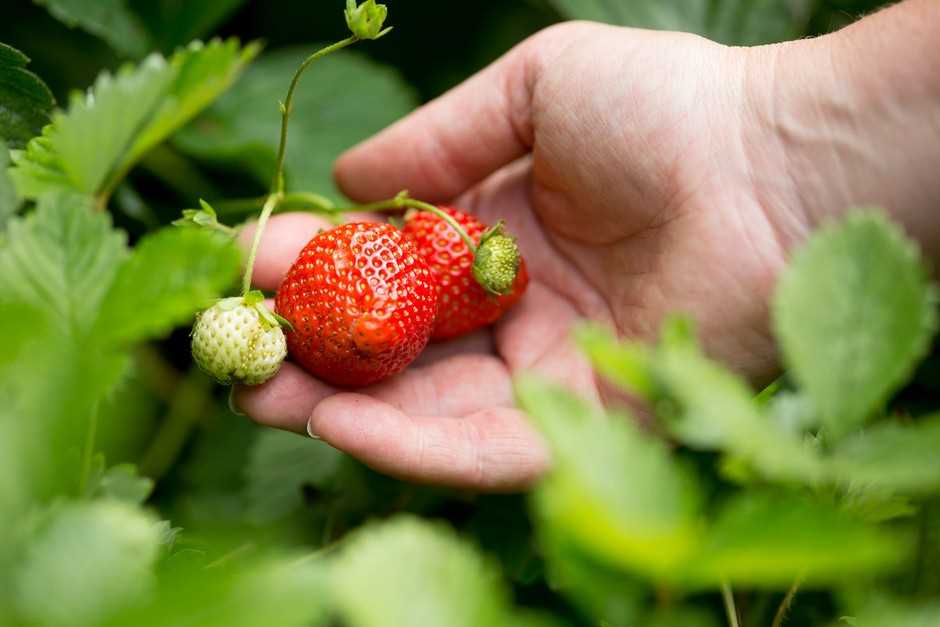
When it comes to growing strawberries from seeds, choosing the right variety is key. There are various factors to consider when selecting strawberry seeds for your home garden. Here are some tips to help you make the best choice:
- Type of Strawberries: There are three main types of strawberries – June-bearing, everbearing, and day-neutral. June-bearing strawberries produce a large crop in early summer, everbearing strawberries produce two smaller crops in summer and fall, while day-neutral strawberries continuously produce fruit throughout the growing season. Decide which type would be best suited for your gardening goals and climate.
- Climate Compatibility: Different strawberry varieties have different climate requirements. Some varieties thrive in cooler climates, while others are better adapted to warmer regions. Consider the temperature and weather conditions in your area to choose a variety that will grow well.
- Flavor and Texture: Strawberry varieties vary in taste and texture. Some are sweet and juicy, while others have a more tart flavor. Consider your preferences and the intended use of the berries, whether it’s for fresh eating, baking, or making preserves.
- Size and Yield: Pay attention to the size of the strawberry fruits and the expected yield of the variety. If you prefer larger strawberries or if you want to maximize your harvest, choose a variety known for its size and productivity.
- Disease Resistance: Strawberries can be susceptible to various diseases, such as powdery mildew, gray mold, and root rot. Look for varieties that are known to have good disease resistance to ensure a healthier crop.
Once you have considered these factors, you can start looking for strawberry seed suppliers or browse online seed catalogs to find the variety that suits your needs. Growing strawberries from seeds can be a rewarding experience, and choosing the right seeds will set you up for success in your home garden.
Preparing the Soil for Strawberry Seeds
Before you can start growing strawberry seeds, it is important to prepare the soil properly. The soil should be rich in organic matter, well-draining, and have a pH level of around 5.5 to 7.5. Here is a step-by-step guide on how to prepare the soil for strawberry seeds:
1. Choose the Right Location
Choose a sunny location for your strawberry plants, as they require at least 6 hours of direct sunlight each day. Make sure the area is free from any weed growth and has good air circulation.
2. Clear the Area
Remove any rocks, weeds, or debris from the area where you plan to plant your strawberry seeds. This will help create a clean and favorable environment for the seedlings to grow.
3. Loosen the Soil
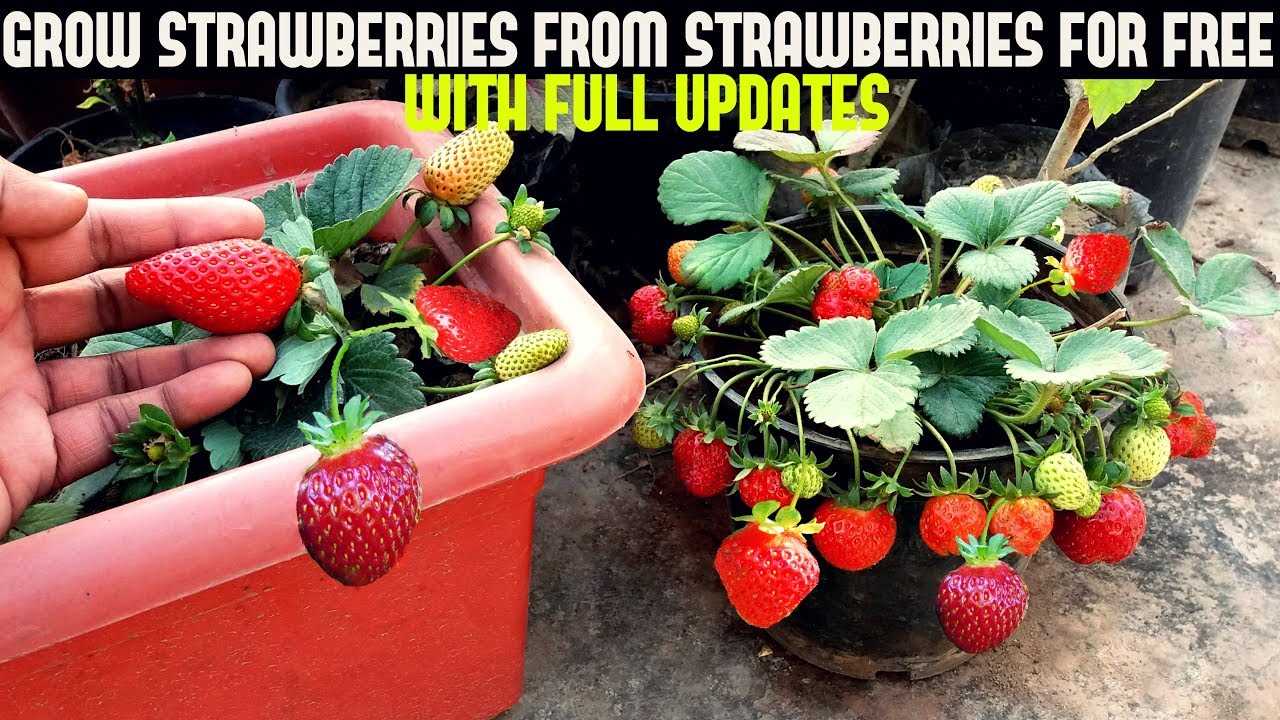
Use a garden fork or a tiller to loosen the soil to a depth of about 6 inches. This will help improve drainage and allow the strawberry roots to penetrate easily.
4. Amend the Soil
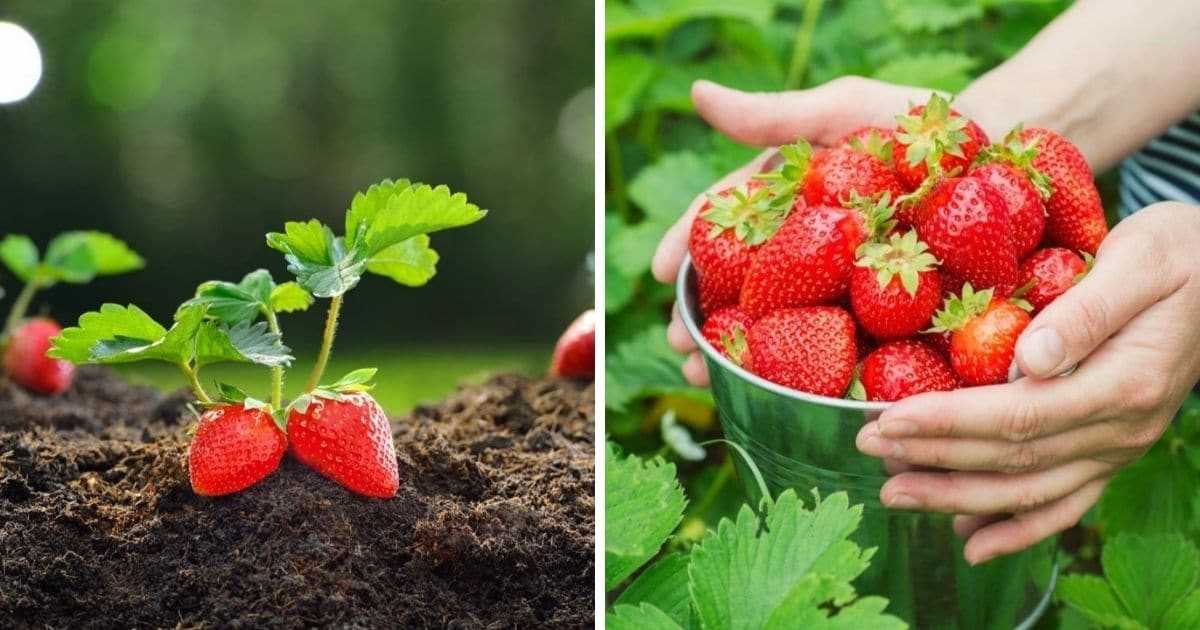
Add organic matter such as compost, well-rotted manure, or aged leaf mold to the soil. This will improve the soil’s fertility, moisture retention, and drainage. Spread a 2- to 3-inch layer of organic matter over the soil and mix it thoroughly.
5. Adjust the pH Level
If the soil pH is below 5.5, add lime to raise it. If the pH is above 7.5, add sulfur to lower it. Test the soil using a pH testing kit and follow the recommended application rates for lime or sulfur.
6. Create Raised Beds or Mounds
If your soil has poor drainage, it is advisable to create raised beds or mounds to grow your strawberry plants. This will prevent waterlogging and promote better root health.
7. Mulch the Beds
Apply a layer of organic mulch such as straw, dried leaves, or wood chips to the soil surface. This will help suppress weed growth, retain moisture, and regulate temperature.
8. Water the Soil
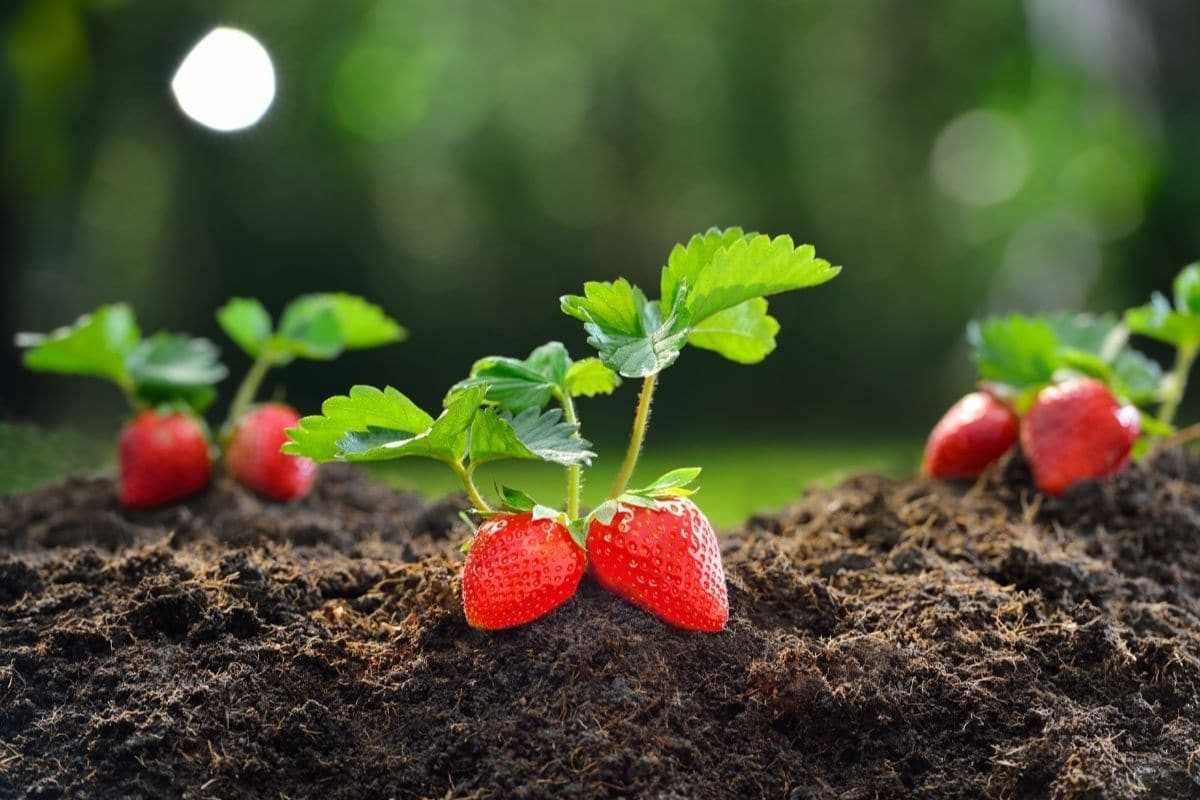
Before planting the strawberry seeds, water the prepared soil thoroughly. This will ensure that the soil is moist and ready to receive the seeds.
By following these steps to prepare the soil, you will create an ideal growing environment for your strawberry seeds. This will lead to healthier plants and a bountiful strawberry harvest in the future.
Planting Strawberry Seeds
To grow strawberries from seeds, you will need to start the process indoors before transplanting them outside. Follow these steps to successfully plant strawberry seeds:
- Choose the right seeds: Select a variety of strawberry seeds that suit your climate and growing conditions. There are different types of strawberries available, so choose the ones that will thrive in your region.
- Prepare the soil: Ensure that the soil is well-drained and fertile. Mix in compost or organic matter to improve the soil’s texture and nutrient content.
- Sow the seeds: Fill a seed tray or individual pots with seed-starting mix. Moisten the mix with water, then scatter the strawberry seeds evenly on the surface. Gently press the seeds into the soil, but do not cover them as they need light to germinate.
- Provide the right conditions: Place the seed tray or pots in a warm location with indirect sunlight. Maintain a temperature of around 65-75°F (18-24°C) for optimal germination. Keep the soil consistently moist but not soggy.
- Wait for germination: It usually takes strawberries seeds about 2-3 weeks to germinate. Once the seedlings emerge, move them to a well-lit area, such as a sunny window or under grow lights.
- Transplant the seedlings: When the seedlings develop at least two sets of true leaves, they are ready to be transplanted. Choose a sunny spot in your garden with well-drained soil. Space the plants about 12-18 inches apart to allow for proper growth.
- Care for the transplants: Water the transplanted seedlings thoroughly after planting. Provide regular waterings, about 1-2 inches per week, depending on weather conditions. Apply a balanced fertilizer according to the package instructions, typically every 4-6 weeks.
- Mulch and weed: Spread a layer of mulch around the strawberry plants to conserve moisture and suppress weeds. Regularly check for weeds and remove them promptly to prevent competition for resources.
- Monitor and harvest: Keep an eye on your strawberry plants for signs of pests or diseases. Protect the plants from birds and other animals by using netting or bird scare devices. Harvest the ripe strawberries when they turn bright red and are fully sweet, typically around 4-6 weeks after transplanting.
By following these steps, you can successfully grow strawberries from seeds and enjoy a bountiful harvest of delicious, homegrown strawberries.
Providing Proper Care for Growing Strawberry Plants
Growing strawberries from seeds can be a rewarding experience, but to ensure success, it is important to provide proper care for your strawberry plants. Here are some essential tips:
- Choose a Suitable Location: Find a sunny spot in your garden that receives at least 6-8 hours of direct sunlight per day. Strawberries thrive in full sun.
- Prepare the Soil: Prior to planting, amend the soil with organic matter, such as compost or aged manure, to improve drainage and fertility. Strawberries prefer well-draining soil with a pH level between 5.5 and 6.5.
- Planting: Plant your strawberry seeds or seedlings in early spring or fall, depending on your climate. Space the plants about 12-18 inches apart in rows that are 3 feet apart.
- Watering: Keep the soil consistently moist, especially during the first few weeks after planting. Avoid overwatering to prevent root rot. Mulching around the plants can help retain moisture and suppress weed growth.
- Fertilizing: Apply a balanced organic fertilizer, such as a 10-10-10 formula, once every 4-6 weeks during the growing season. Follow the instructions on the package for the correct dosage.
- Weed Control: Regularly remove weeds from the strawberry bed to prevent competition for nutrients and water. Be careful not to damage the shallow roots of the plants while weeding.
- Pest and Disease Management: Inspect your plants regularly for pests, such as aphids and slugs. Use organic pest control methods, such as handpicking or spraying with insecticidal soap, if necessary. To prevent disease, avoid overhead watering and provide adequate air circulation around the plants.
- Harvesting: Strawberry plants typically start producing fruits 4-6 weeks after planting. Harvest ripe strawberries when they are fully red and easily detach from the stem. Enjoy them fresh or use them in various culinary creations.
By following these care tips, you can enjoy a bountiful harvest of delicious homegrown strawberries. Remember to be patient and provide consistent care throughout the growing season for optimal results.
Dealing with Common Strawberry Seedling Problems
When growing strawberries from seeds, you may encounter some common problems with your seedlings. Understanding these problems and knowing how to deal with them can help ensure the success of your strawberry growing endeavor.
Disease
One common problem that can affect strawberry seedlings is disease. Diseases like gray mold, powdery mildew, and root rot can damage or kill your seedlings. To prevent disease, it’s important to maintain a clean and healthy growing environment. Make sure to provide good air circulation, avoid overwatering, and remove any infected plants or debris from the area. Using disease-resistant varieties can also help prevent or minimize disease issues.
Pests
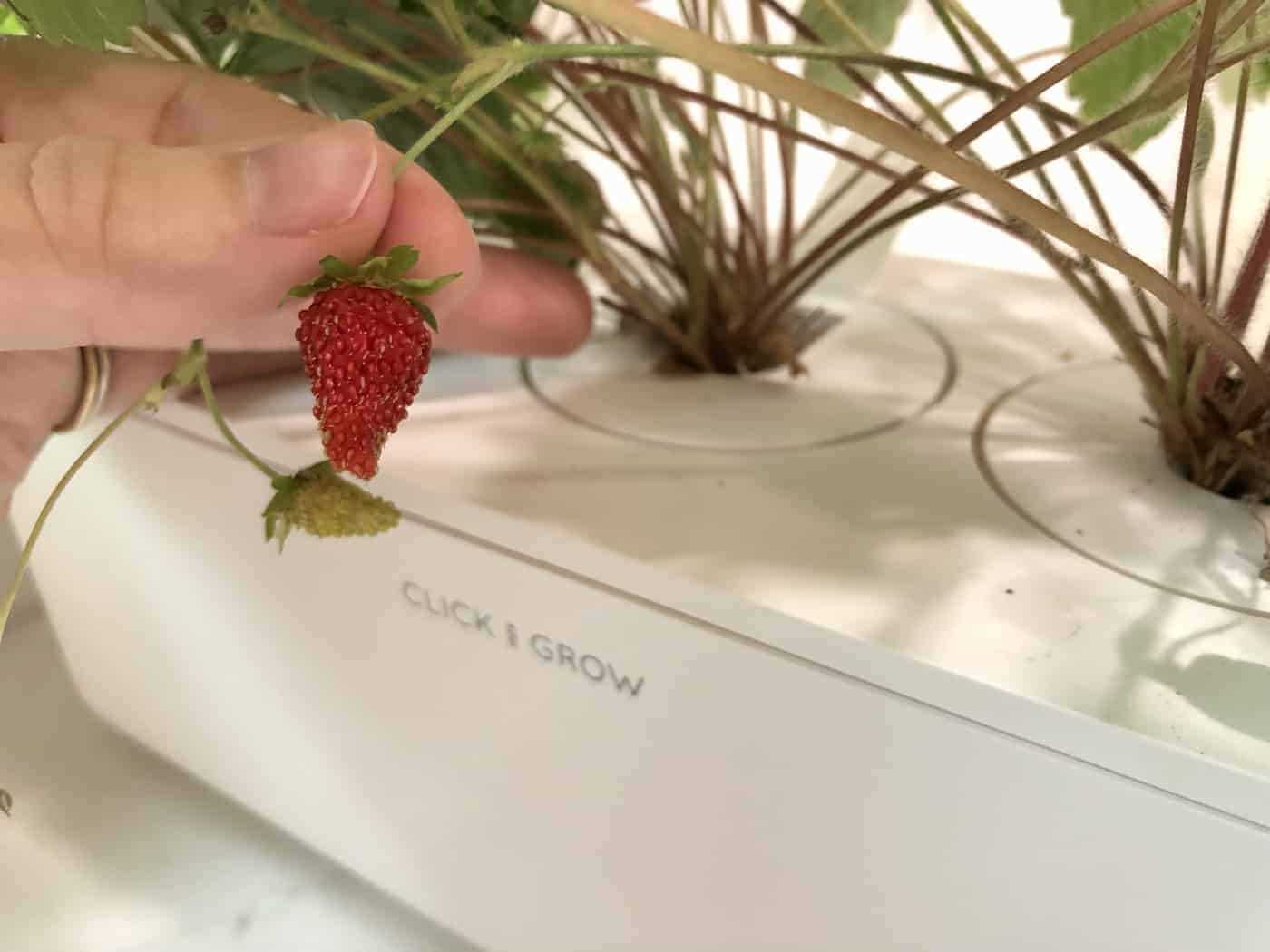
Pests, such as aphids, slugs, and snails, can also pose a threat to your strawberry seedlings. Regularly inspect your plants for signs of pests and take appropriate measures to control them. This may include manually removing pests, using organic pest control methods, or applying insecticides if necessary. Creating physical barriers, such as netting, can also help protect your seedlings from pests.
Competition
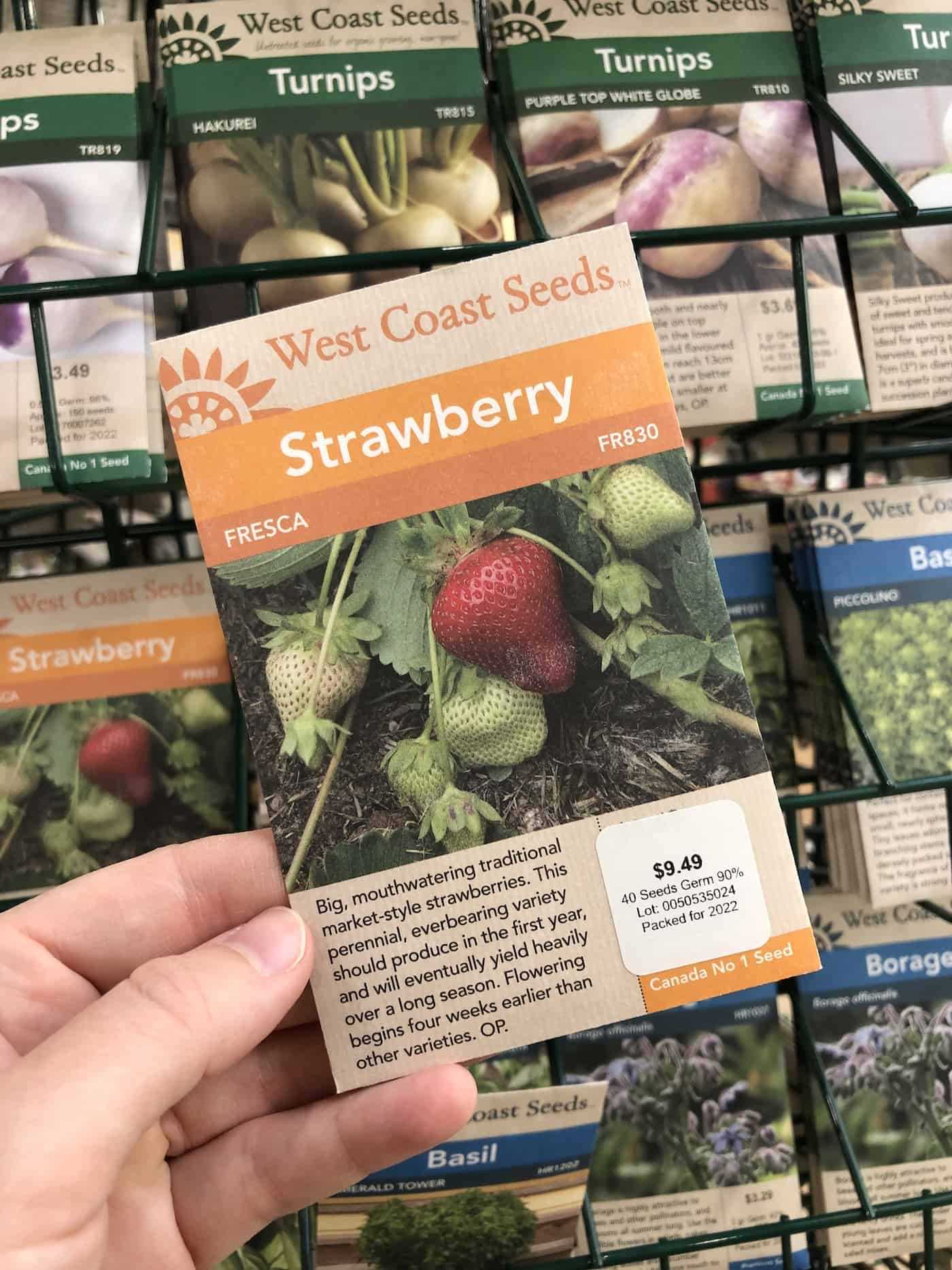
Seedlings may face competition from weeds or other plants growing nearby. Weeds can compete with strawberry seedlings for nutrients, water, and sunlight, which can hinder their growth and development. To prevent competition, regularly weed your strawberry patch and provide mulch to suppress weed growth. Take care when hand-weeding to avoid damaging the delicate seedlings.
Transplant Shock
Transplanting strawberry seedlings from indoor pots or trays to the outdoor garden can sometimes cause transplant shock. This can result in wilting, stunted growth, or even death of the seedlings. To minimize transplant shock, harden off your seedlings by gradually acclimating them to outdoor conditions over a period of 7 to 10 days. This can be done by placing them outside for a few hours each day, gradually increasing the duration and exposure to sunlight and wind.
Inadequate Nutrients
Inadequate nutrients can lead to poor growth and development of strawberry seedlings. Make sure to provide them with a balanced fertilizer that is rich in nitrogen, phosphorus, and potassium. Follow the recommended dosage and application instructions to avoid overfertilization, which can damage the seedlings. Regularly monitor the soil pH and adjust as needed to ensure the proper nutrient availability.
Conclusion
By addressing these common strawberry seedling problems, you can increase your chances of success in growing strawberries from seeds. Remember to maintain a clean and healthy growing environment, manage pests and weeds, and provide adequate nutrition to your seedlings. With proper care, you can enjoy a bountiful harvest of delicious strawberries.
Harvesting and Enjoying Your Homegrown Strawberries
Harvesting and enjoying your homegrown strawberries is an exciting and rewarding experience. After patiently caring for your strawberry plants, it is finally time to harvest the fruit of your labor. Here are some tips to help you make the most out of your strawberry harvest:
1. Picking the Right Time
It is important to choose the perfect time to harvest your strawberries. The best time is when the strawberries are fully ripe and reach their peak flavor. Look for strawberries that are fully red and have a shiny appearance. The flesh should be firm but not too hard. Avoid picking strawberries that are still partially green or underripe.
2. Harvesting Techniques
When harvesting strawberries, it is best to use a pair of small scissors or garden shears. This way, you can cut the stem just above the fruit without damaging the plant. Avoid pulling or twisting the strawberries, as this may cause damage to both the plant and the fruit.
3. Handling and Storing
After harvesting your strawberries, handle them with care to avoid bruising or damaging the fruit. Place them gently in a clean basket or container, making sure not to stack them too high. Avoid washing the strawberries until you are ready to consume them, as excess moisture can promote spoilage. Store them in a cool place, such as the refrigerator, to maintain their freshness.
4. Enjoying the Fruits of Your Labor
Once your homegrown strawberries are harvested and properly stored, it’s time to enjoy them! There are countless ways to savor the juicy sweetness of fresh strawberries. Here are a few ideas:
- – Enjoy them as a healthy snack on their own
- – Add them to your breakfast cereal or yogurt
- – Make delicious strawberry jam or preserves
- – Use them as a topping for pancakes, waffles, or ice cream
- – Include them in your favorite fruit salad or smoothie
5. Sharing the Fruits of Your Labor
Sharing your homegrown strawberries with friends, family, and neighbors is a wonderful way to spread the joy of gardening. Organize a strawberry picking party or simply give away some baskets filled with fresh strawberries. Your loved ones will surely appreciate the delicious and thoughtful gift.
Growing strawberries from seeds and harvesting your own homegrown fruit is a satisfying and fulfilling experience. Follow these tips, and soon enough, you’ll be enjoying the bountiful harvest of sweet and succulent strawberries!
Question-answer:
How do I grow strawberries from seeds?
To grow strawberries from seeds, start by selecting a variety of strawberry that is suitable for your climate. Then, prepare a well-draining potting mix and sow the seeds on top, spacing them evenly. Cover the seeds lightly with soil, mist with water, and place the tray in a warm location. Keep the soil moist but not soggy, and within a few weeks, you should see seedlings emerging. Transplant the seedlings into individual containers once they have a few sets of true leaves, and eventually, you can transplant them outdoors into a sunny location.
What is the best time to grow strawberries from seeds?
The best time to grow strawberries from seeds is in late winter or early spring. This allows the seedlings to establish a strong root system before summer arrives. However, you can also start seeds indoors at any time of the year and then transplant them outdoors when the weather is suitable. Keep in mind that strawberries require plenty of sunlight, so choose a location that receives at least 6-8 hours of direct sunlight each day.
Can I grow strawberries from store-bought seeds?
Yes, you can grow strawberries from store-bought seeds. However, keep in mind that some store-bought strawberries may be hybrids, which means that the seeds may not produce plants with the same characteristics as the parent plant. If you want to grow true-to-type strawberries, it is recommended to purchase seeds from a reputable seed supplier that specializes in strawberry seeds. This way, you can be sure that the seeds will grow into plants that match the variety you selected.
How long does it take for strawberries to grow from seeds?
The time it takes for strawberries to grow from seeds can vary depending on various factors such as the variety, growing conditions, and climate. On average, it takes about 2-3 weeks for strawberry seeds to germinate. After germination, the seedlings will need to grow for several weeks to develop a strong root system and true leaves. Once the seedlings are about 4-6 weeks old, they can be transplanted into individual containers or the garden, and it will take another few months for the plants to produce ripe strawberries.
Can I plant strawberry seeds directly in the garden?
While it is possible to plant strawberry seeds directly in the garden, it is generally not recommended. Strawberry seeds are very small and delicate, and they require careful attention and specific conditions to germinate successfully. Sowing the seeds indoors or in a controlled environment allows you to provide the optimal conditions for germination and early growth. Once the seedlings are well-established and large enough to handle outdoor conditions, they can be transplanted into the garden.







